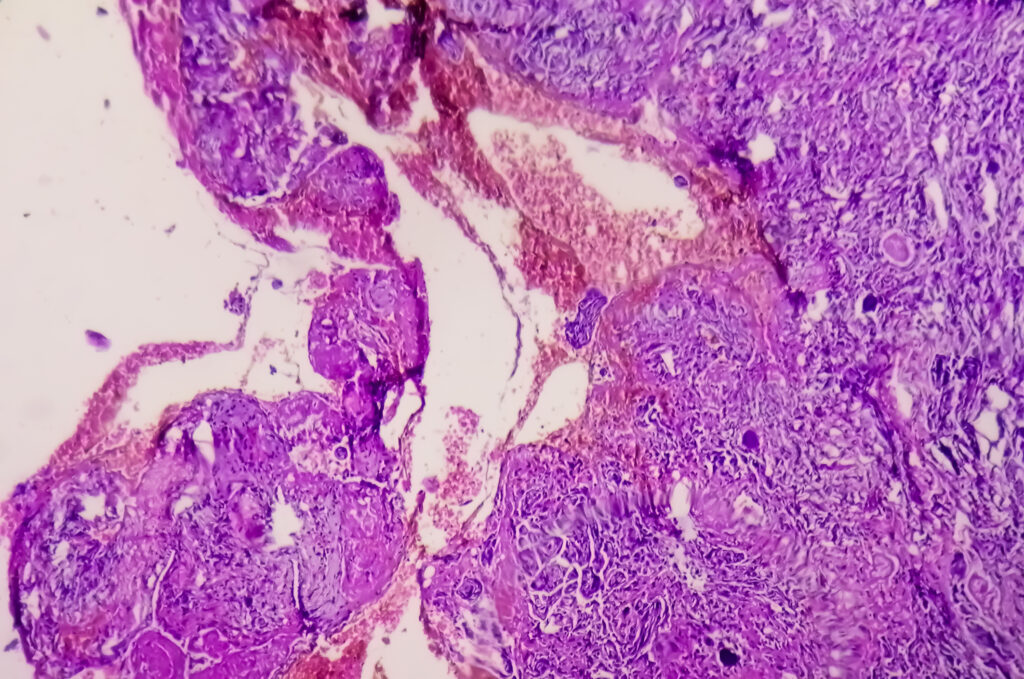Investigators at Mass General Brigham have developed a new tumor-fighting strategy that “hijacks” a tumor cells’ innate immune machinery to effectively work against itself. The study, published in the Proceedings of the National Academy of Sciences (PNAS), details a method that induces tumor cells to generate an immune-activating molecule called cyclic GMP-AMP (cGAMP). This reacts to the presence of double-stranded DNA (dsDNA) in the cells’ cytoplasm to activate the immune system to fight the tumor.
“Tumor cells comprise a significant proportion of the tumor microenvironment but are often under-utilized for immunotherapy,” said senior author Natalie Artzi, PhD, of the Mass General Brigham Department of Medicine. “These findings highlight how tumor cells can be used to actively contribute to their own elimination.”
The Mass General team’s approach focused on influencing the stimulator of interferon genes (STING) signaling pathway to trigger and inflammatory immune response. STING is activated when its upstream enzyme, cyclic GMP-AMP synthase (cGAS), detects dsDNA in the cytoplasm. The presence of dsDNA causes signal cGAS of this sign of viral infection and in turn produces cyclic GMP-AMP (cGAMP) which then triggers STING to produce an immune response. The result is a cascade of cellular activity that produces type I interferons and other proinflammatory cytokines.
This method is a clever approach to leverage the STING pathway to trigger tumor-fighting immunity. While the STING pathway is known to be a driver of immune defense and can induce anti-tumor activity, methods to develop STING activating treatments have proven difficult. Synthetic STING agonists have shown some ability to fight tumors, but they are hampered by rapid degradation, poor cell penetration, and systemic toxicity. Side effects of this approach often include high level of inflammation and T-cell death.
In addition, cGAMP is hydrophilic and negatively charged, which prevents efficient cellular uptake and leads to degradation by ectonucleotide pyrophosphatase/phosphodiesterase 1 (ENPP1).
In order to avoid these pitfall, the Mass General Brigham team instead induced the cancer cells themselves to synthesize and export their own cGAMP. To accomplish this, the team used lipid nanoparticles (LNPs) to deliver mRNA encoding cGAS into tumor cells. Once expressed, the cGAS enzyme detects cytosolic dsDNA, which is abundant in cancer cells a result of genomic instability, to produce cGAMP. The cGAMP can then be transferred to neighboring immune cells to activate STING.
Preclinical studies show that treating melanoma cells with cGAS LNPs increased both intracellular and extracellular cGAMP concentrations in these cells. This was also accompanied by immune activation in proximal immune cells, including CD8+ T cells, NK cells, macrophages, and dendritic cells.
When applied to mouse models of aggressive melanoma, tumor growth was significantly reduced, and survival improved. The effects were enhanced further when the cGAS LNP treatment was combined with a PD-1 targeting immune checkpoint blockade therapy.
The idea to reactivate silenced STING signaling in tumors builds on prior research showing that cancer cells often suppress cGAS and STING through epigenetic mechanisms. Earlier studies demonstrated that cancer-cell-derived cGAMP could activate immune cells and promote tumor infiltration by effector CD8+ T cells or natural killer cells, though these have not been therapy targets, to date.
The indirect STING targeting described in this new research also avoids many of the shortfalls that have plagued direct STING agonists. “Mimicking endogenous processes avoids the toxicity seen previously by dosing cGAMP, synthetic STING agonists, or the immune effects like T-cell apoptosis,” said Artzi. Of additional benefit, transient expression of cGAS mRNA and the tumor-specific accumulation of cytosolic dsDNA make the treatment selective, since healthy cells typically lack cytoplasmic DNA.
The Mass General team is now refining nanoparticle formulations to optimize delivery efficiency and is investigating mechanisms of cGAMP transfer between cells. They also plan to explore combining the approach with radiotherapy and chemotherapy regimens that enhance cytosolic DNA accumulation, as well as ways to prevent cGAMP degradation through ENPP1 inhibition.

